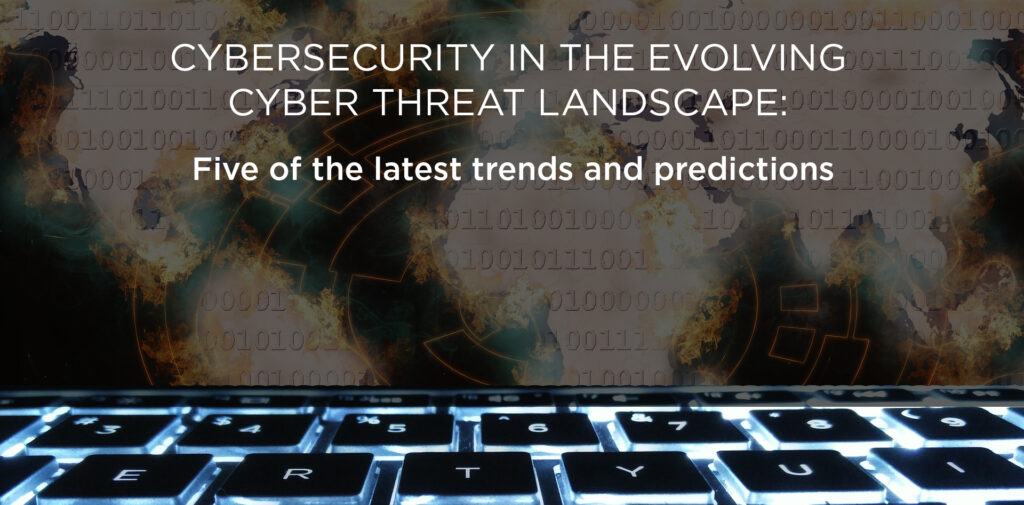It’s a fact that organizations are increasingly relying on the Internet for daily activities. This combined with the COVID-19 pandemic has accelerated the shift to remote work following public health physical distancing guidelines. As we’re gearing up for the second quarter of 2021, still not out of the woods with the COVID-19 pandemic, we take a look at the trends and predictions in cyberspace that cut across a substantial number of industries.
- Ransomware is getting worse
- Artificial Intelligence (AI) is and enhancing cybersecurity
- Mobile is the new #1 target
- Data breaches and network intrusions
- Increased social engineering attacks
However, as information and activities relocate online, they also become vulnerable to cyber threat actors. Cyber threat actors pose a financial threat to both individuals and organizations, particularly through the theft of intellectual property and proprietary information. They also threaten the privacy of individuals and organizations through the theft of personal information, which facilitates additional criminal behavior such as identity theft and financial fraud. As physical infrastructure and processes continue to be connected to the Internet, cyber threat activity has followed, leading to increased risk to the functioning of machinery and the safety of Canadians.
1. Ransomware is getting worse
It is anticipated that ransomware will progressively get worse with cybercriminals now attempting to proverbially kill two birds with one stone. Ransomware is now set up to first steal the data before encrypting it and demanding a ransom. Similarly, malware is being packaged with other threats to deliver a double blow to companies. With the move to work from home, cybercriminals will undoubtedly take advantage of unpatched systems and architecture weaknesses of the home office setup.
2. Artificial Intelligence (AI) is and enhancing cybersecurity
With AI being introduced in all market sectors, AI combined with machine learning has brought tremendous changes to the cybersecurity landscape. For example, AI has been vital in building automated security systems and developing automatic threat detection. However, AI is also being used to develop smart malware and attacks to bypass the latest security protocols in controlling data. AI-enabled threat detection systems can predict new attacks and notify CISOS of a data breach instantly, making it the next cybersecurity trend in 2021.
3. Mobile is the new #1 target
Cybersecurity trends indicated a significant increase – at least 50% – in mobile banking malware and attacks in 2020. This means that handheld devices are fast becoming a favorable prospect for hackers. In addition to the financial threat, our mobile devices also contain our photos, messages and transaction histories creating even more risk to individuals. And so, anti-virus and malware software for smartphones may see an upsurge in 2021.
4. Data breaches and network intrusions
Data breaches are still the main concern for organizations globally and safeguarding digital data is the primary goal of organizations and individuals alike. Given the sensitivity of most personal information, even the slightest bug in your system or browser is a potential leak and a potential vulnerability for hackers to exploit. There are, furthermore, several cyber-attack techniques that mask intrusions such as multi-routing, covert scripts, protocol impersonation, and traffic flooding.
5. Increased social engineering attacks
Microsoft reported a jump in social engineering attacks from 20 000 in February 2020 when the WHO announced COVID-19 to 30 000 per day in May of the same year – and that is in the United States alone. As cybercriminals realize how financially lucrative cybercrime is, they are constantly improving their social engineering techniques to optimize each attack. Common attacks are becoming more advanced by the day which means cybercriminals are also gaining access to more confidential information than ever. Social engineering techniques include among others phishing, spear phishing, fraudulent communications, and DDoS attacks. Often, phishing emails impersonate well-known services or organizations such as Office 365, Zoom, Amazon or Apple to harvest login credentials. Cybercrime of this nature will undoubtedly only become more prevalent and dangerous in 2021.
Cybercrime is not slowing down any time soon and cyber threats are increasing by the day. It’s time to consider whether your organization is sufficiently protected against these threats and threat actors. The following questions should guide your cybersecurity planning. Do you know who might be targeting you and why you could become a target? Is there anything specific to your organization or operations that they may be after? Knowing this puts you in the driver’s seat of taking the first steps to protect your business against cyber-attacks. Stage2Data can assist – we offer robust, multi-layered security products to combat next-gen malware, ransomware and other enterprise threats.
Ransomware Readiness:
An In-Depth Evaluation Guide
If you found this post interesting, you might enjoy these too:
Remote Work Challenges: IT and cybersecurity risks
Crime doesn’t pay, but Cybercrime does. What motivates Cybercrime?


